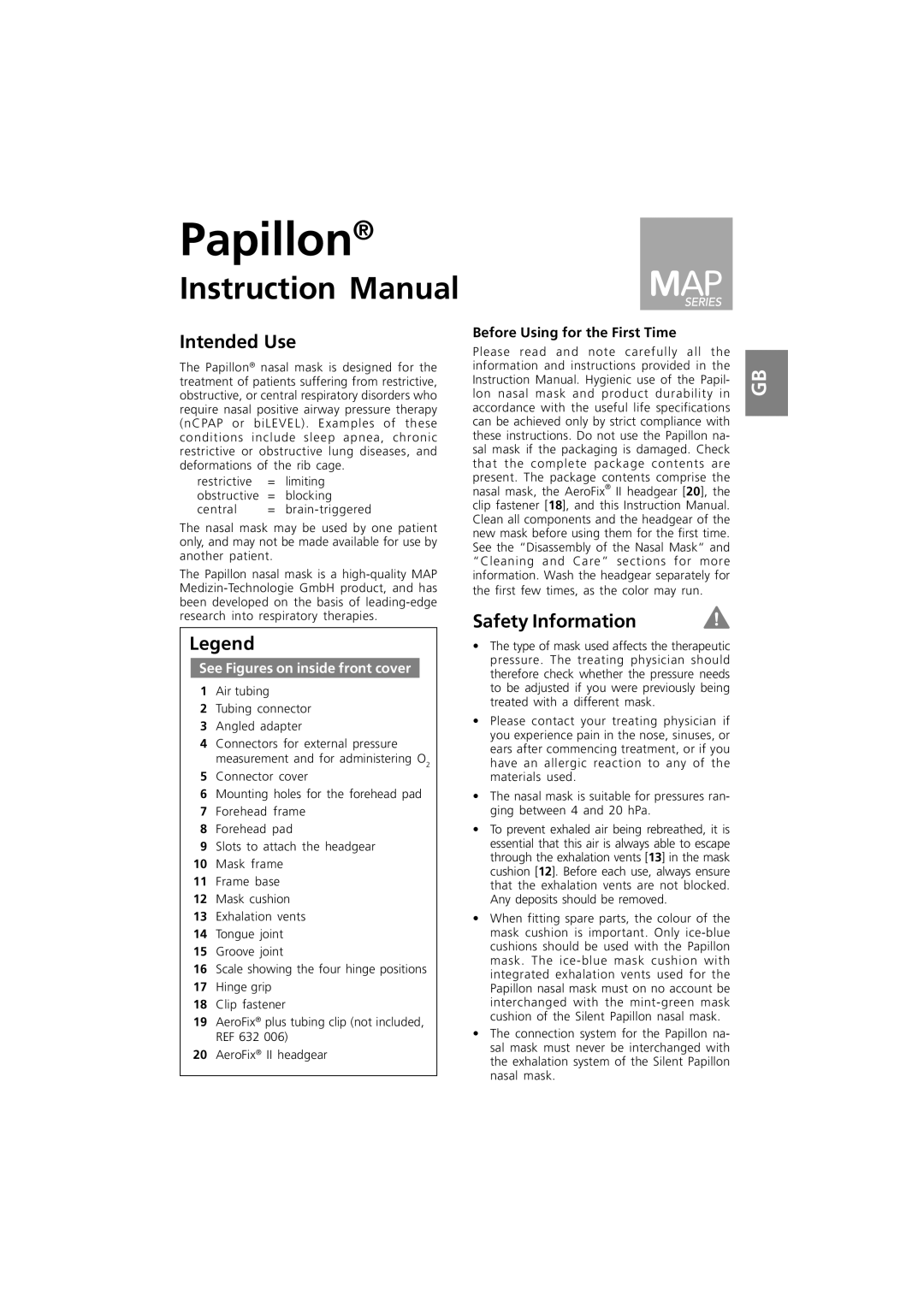
Papillon®
Instruction Manual
Intended Use
The Papillon® nasal mask is designed for the treatment of patients suffering from restrictive, obstructive, or central respiratory disorders who require nasal positive airway pressure therapy (nCPAP or biLEVEL). Examples of these conditions include sleep apnea, chronic restrictive or obstructive lung diseases, and deformations of the rib cage.
restrictive | = | limiting |
obstructive | = | blocking |
central | = |
The nasal mask may be used by one patient only, and may not be made available for use by another patient.
The Papillon nasal mask is a
Legend
See Figures on inside front cover
1Air tubing
2Tubing connector
3Angled adapter
4Connectors for external pressure measurement and for administering O2
5Connector cover
6Mounting holes for the forehead pad
7Forehead frame
8Forehead pad
9Slots to attach the headgear
10Mask frame
11Frame base
12Mask cushion
13Exhalation vents
14Tongue joint
15Groove joint
16Scale showing the four hinge positions
17Hinge grip
18Clip fastener
19AeroFix® plus tubing clip (not included, REF 632 006)
20AeroFix® II headgear
Before Using for the First Time
Please read and note carefully all the information and instructions provided in the Instruction Manual. Hygienic use of the Papil- lon nasal mask and product durability in accordance with the useful life specifications can be achieved only by strict compliance with these instructions. Do not use the Papillon na- sal mask if the packaging is damaged. Check that the complete package contents are present. The package contents comprise the nasal mask, the AeroFix® II headgear [20], the clip fastener [18], and this Instruction Manual. Clean all components and the headgear of the new mask before using them for the first time. See the “Disassembly of the Nasal Mask“ and “Cleaning and Care” sections for more information. Wash the headgear separately for the first few times, as the color may run.
Safety Information
•The type of mask used affects the therapeutic pressure. The treating physician should therefore check whether the pressure needs to be adjusted if you were previously being treated with a different mask.
•Please contact your treating physician if you experience pain in the nose, sinuses, or ears after commencing treatment, or if you have an allergic reaction to any of the materials used.
•The nasal mask is suitable for pressures ran- ging between 4 and 20 hPa.
•To prevent exhaled air being rebreathed, it is essential that this air is always able to escape through the exhalation vents [13] in the mask cushion [12]. Before each use, always ensure that the exhalation vents are not blocked. Any deposits should be removed.
•When fitting spare parts, the colour of the mask cushion is important. Only
•The connection system for the Papillon na- sal mask must never be interchanged with the exhalation system of the Silent Papillon nasal mask.
GB
